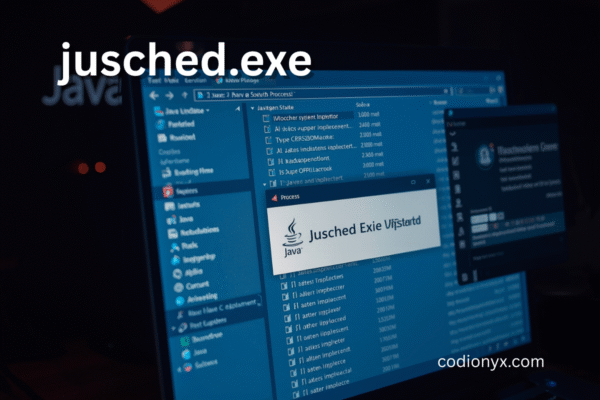Introduction.
In today’s smart energy landscape, effective NRIs vs. ERIs PNM. relies heavily on accurate load monitoring technologies. Two key systems used for this purpose are NRIs (Non-Intrusive Recognition Interfaces) and ERIs (Enhanced Recognition Interfaces). While both aim to identify and analyze power usage, they differ in functionality, complexity, and performance. This article explores the core differences between NRIs and ERIs, their roles in PNM, and how to choose the right solution for your energy system.
What Is the Difference Between NRIs vs. ERIs PNM?
Power Network Management (PNM) has emerged as a crucial component of guaranteeing the effective and dependable delivery of electricity as the world transitions to smarter energy systems. NRIs (Non-Intrusive Recognition Interfaces) and ERIs (Enhanced Recognition Interfaces) are two technologies that are frequently discussed in this sector.
Despite their similar names, NRIs vs. ERIs PNM are very different in terms of their functions, capacities, and ideal applications. To assist you comprehend their responsibilities in contemporary energy management, this essay will clearly compare them.
Comprehending PNM: The Basis of Intelligent Grids.
Let’s take a quick look at Power Network Management before getting into NRIs vs. ERIs PNM.
The term PNM describes the collection of instruments and frameworks used to track, manage, and maximise the production, distribution, and consumption of electrical power. Among its primary objectives are:
Keeping the supply and demand of electricity in balance.
Finding errors and avoiding blackouts.
Increasing the effectiveness of energy.
Controlling customer consumption and peak loads.
PNM relies heavily on accurate data gathering, which is where NRIs and ERIs are useful.
Non-Intrusive Recognition Interfaces: What are they?
Systems called NRIs are made to keep an eye on electrical loads without having to connect to specific appliances directly. They employ algorithms to determine which devices are in operation based on their distinct energy signatures after analysing the total amount of electricity used from a single point in the system, typically where electricity enters a building.
For instance, there is a noticeable increase in electricity consumption when a washing machine is turned on. When an NRI system notices that surge, it recognises it as a washing machine by applying machine learning and previous trends.
NRIs are simple to install and frequently utilised in older systems or household settings where upgrading smart appliances is impractical because they do not require physical connections to every device.
Enhanced Recognition Interfaces, or ERIs, are what?
ERIs are more sophisticated systems that offer real-time, detailed device and electrical consumption recognition. ERIs may combine smart meters, Internet of Things devices, and sensor networks dispersed across the system, in contrast to NRIs, which primarily rely on pattern recognition from a single point.
To offer more profound insights, they frequently make use of edge computing, artificial intelligence, and sophisticated data analytics. Because of this, ERIs are perfect for high-precision monitoring, commercial energy management, and smart grids.
You gain faster recognition and more detail with ERIs. To support the technology, they frequently call for stronger infrastructure, a bigger budget, and more setup.
Important Distinctions Between ERIs and NRIs.
Although identifying electrical loads and enhancing power management are goals shared by both NRIs vs. ERIs PNM, their approaches differ.
Since NRIs don’t interfere with existing systems, they can function without changing them. Particularly for homes or small-scale applications, they are scalable and reasonably priced. However, when it comes to differentiating various appliances with identical energy signatures, their accuracy may be limited.
ERIs, on the other hand, provide real-time feedback, improved accuracy, and connection with smart devices. Modern energy networks that require fine-grained data and control are better suited for them. However, they also demand more sophisticated infrastructure and are more expensive.
In what contexts are NRIs and ERIs utilised?
NRIs are frequently utilised in:
Systems for monitoring household energy use
Utility firms for analysis of general usage
Consumer behaviour and energy use research
Low-cost prototypes of smart grids
ERIs occur more frequently in:
Commercial and industrial power systems
IoT-enabled infrastructure in smart grids
Systems that use renewable energy to balance loads
Predictive maintenance with real-time monitoring
Identification of energy theft and investigation of faults
Advantages of NRI Use.
The simplicity of NRIs is one of their main benefits. They are simple to deploy and manage because they don’t need to be physically installed on every appliance. They are therefore perfect for large-scale residential use or older structures.
Additionally, they are affordable, which makes them available for low-budget projects in developing areas.
But because they only use signal analysis, they can misidentify devices, particularly when several appliances are operating at once.
Advantages of ERI Use.
Advantages of A far greater degree of precision and detail is provided by using ERIs. They make it possible to track power use in real time across many buildings, floors, and gadgets. They also facilitate automation, alerting, and AI-based decision-making due to their ability to interact with cloud and IoT systems.
Because of this, ERIs are ideal for businesses that wish to use smart building technology or require extensive control over their energy systems.
The compromise? increased expenses for setup and upkeep, as well as the requirement for more sophisticated infrastructure.
What Should You Select?
Your needs and available funds will determine whether you choose an NRIs vs. ERIs PNM.
NRI systems are an excellent option if you’re searching for an inexpensive, simple-to-install solution that offers general consumption statistics. They are particularly helpful for research projects, houses, and tiny constructions.
Despite the higher initial cost, investing in an ERI system may provide the accuracy and capabilities you need if you need real-time monitoring, comprehensive analytics, or are developing a smart energy grid.
Is a Hybrid Approach the Way Forward for PNM?
Given how quickly technology is developing, many experts think a hybrid approach, in which ERIs are employed in high-priority or vital locations and NRIs undertake routine monitoring duties, is the way of the future for power network management.
This method creates an effective, adaptable, and data-driven energy management system by fusing the accuracy and intelligence of ERIs with the affordability and scalability of NRIs.
Conclusion.
NRIs vs. ERIs PNM are essential to power network management. NRIs are excellent for basic monitoring because they are inexpensive and simple to install. Modern energy systems and smart grids benefit greatly from the enhanced functionality and increased accuracy that ERIs provide. Your demands will determine which option you choose, but frequently combining the two can yield the best results in terms of intelligence and simplicity.
FAQs
1. Can I use the same system for both NRIs vs. ERIs PNM?
Indeed. NRIs vs. ERIs PNM are combined in many sophisticated PNM systems to balance usefulness and cost.
2. Do ERIs outperform NRIs?
Although NRIs vs. ERIs PNM have more precision and more features, they are not inherently superior. The objectives and financial constraints of your system should guide your decision.
3. Do ERIs require internet access?
An internet connection is typically necessary because the majority of ERI systems rely on cloud computing or IoT integration.
4. Are NRIs safe?
Because NRIs are often local and passive, they are less susceptible to cyberattacks. However, because of data sharing and remote access, ERIs need more robust security.










